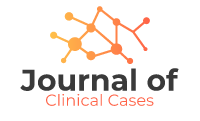Corresponding Author:
Abdalla Hassan Sharief,
Department of Clinical Pathology and Immunology, Institute of Endemic
Diseases, University of Khartoum, Sudan.
Email: abdullasharief@postmaster.co.uk
- Abstract
1.1. Introduction
Just over 50,000 Ethiopians have fled to Sudan to date, following escalating conflict in Ethiopia’s Tigray region. UNHCR, the UN Refugee Agency, together with the Sudanese authorities, has moved some 14,000 refugees from Hamdayet and Abderafi border points to Um Rakuba camp, situated some 70 kilometres away from the Ethiopian border. Most of the refugees in the camp and those crossing into Sudan, many of them women
and children, are desperate for food, shelter, clean water, sanitation and health care. The aim of this survey was to assess/monitor health status of Ethiopian migrants/ refugees in eastern Sudan and obtain reliable estimates on access to essential healthcare
1.2. Methods
Participants were generally interviewed, using Ethiopian interpreters when needed. Sera were collected for detection of hepatitis B virus (HBV) and finger prick blood was also taken for malaria and visceral leishmaniasis (VL) detection. Past VL infection was detected by leishmanin skin test (LST). Sputum samples were taken to be examined for tuberculosis
infection. Stoll specimens were be examined for the presence of ova and parasites.
1.3. Results
This study reported considerable prevalence rates of Tb and HBV (12.1% and 7% respectively) according to the number of individuals recruited. We found a surprisingly high prevalence of previously undiagnosed malaria, tuberculosis, hepatitis B virus and intestinal parasites. Indeed, stool microscopy revealed a prevalence of S. mansoni of 4%. Other,
less frequently diagnosed parasitic infections were giardiasis, H. nana infection, and strongyloidiasis.
1.4. Conclusion
Refugees bear a disproportionate burden of infectious diseases because of the circumstances under which they escaped to the Sudan. Initially screening of refugees for VL, TB, HBV and evaluation of stool samples for intestinal parasites identified infectious diseases with potential for long-term sequelae.
- Keywords:
Infectious diseases, Ethiopian Refugees, Sudan, health assessment
Citation:
Abdalla Hassan Sharief. Current Influx Of Ethiopian Migrants And Refugees In Eastern Sudan: A Rapid Health Assessment. Journal Of Clinical Cases 2024




